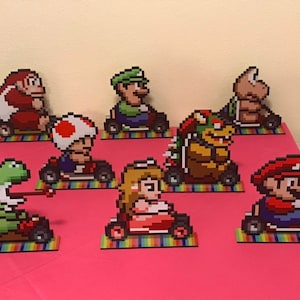
Many PC games, most notably Wacky Wheels and Skunny Kart, have a Mode 7 effect made by a completely software-based method. The GBA can make the same effect by using mode 2, which provides two "Mode 7" layers, and putting the sprites between the layers. Examples are Contra III: The Alien Wars (stage 2) and the introduction screen of Tiny Toon Adventures and when a player falls off the stage in Super Mario Kart. On the Super NES, a variation of Mode 7 allows pixels of the background layer to be in front of sprites. The effect enables developers to create the impression of sprawling worlds that continue forever into the distance.
This graphical method is not only suited to racing games it is also used extensively for the overworld sections of role-playing games such as Square's popular 1994 game Final Fantasy VI. More complex effects such as fuzz are possible by using other equations for the position, scaling, and rotation of each line. On each machine supporting this effect, it is possible to change the scaling/rotation values during the horizontal blanking period of each scanline to draw a flat plane in a perspective projection this became thought of as the characteristic "Mode 7" effect. The Game Boy Advance and Nintendo DS 2D graphics hardware have scaling and rotation for traditional tiled backgrounds in its modes 1 and 2 and scaling and rotation for bitmaps in modes 3 through 5 (used less often on the GBA because of technical limitations).

The Super NES console has eight modes, numbered from 0 to 7, for displaying background layers, the last one (background mode 7) having a single layer that can be scaled and rotated.


 0 kommentar(er)
0 kommentar(er)
